Do you need an excuse to need another Swedish gingerbread cookie?
Then, let’s turn to Sundhetzens speghel from 1642 and use some nice, simple “marketing logic”. As you know, gingerbread cookies or pepparkakor generally contain ingredients such as cinnamon, ginger, and cloves.
According to Andreas Palmcron’s health bible above, cinnamon has the power to strengthen your stomach, liver, and other organs, but also resist poisoning. Ginger isn’t any lesser — it does the same, and also gives an appetite. Cloves? It strengthens the heart and “has the same powers as ginger and pepper”.
We don’t have to update the 17th-century health advice right now, do we? So, for the sake of your health, enjoy another gingerbread cookie while you watch how they are made in stop motion:
The gingerbread cookie in Sweden
Jan-Öjvind Swahn mentions in Mathistorisk Uppslagsbok that gingerbread cookies historically were seen “as much as medicine as a sweet treat”, which gets some support from Sundhetzens speghel above. Consider it the medieval equivalent to today’s green smoothie. Apparently, there is evidence that the nuns in Vadstena’s cloister ate great amounts of gingerbread as early as 1444.
But the gingerbread cookie isn’t originally from Sweden, but is something we have received through trade with Germany during the medieval times, according to Swahn.
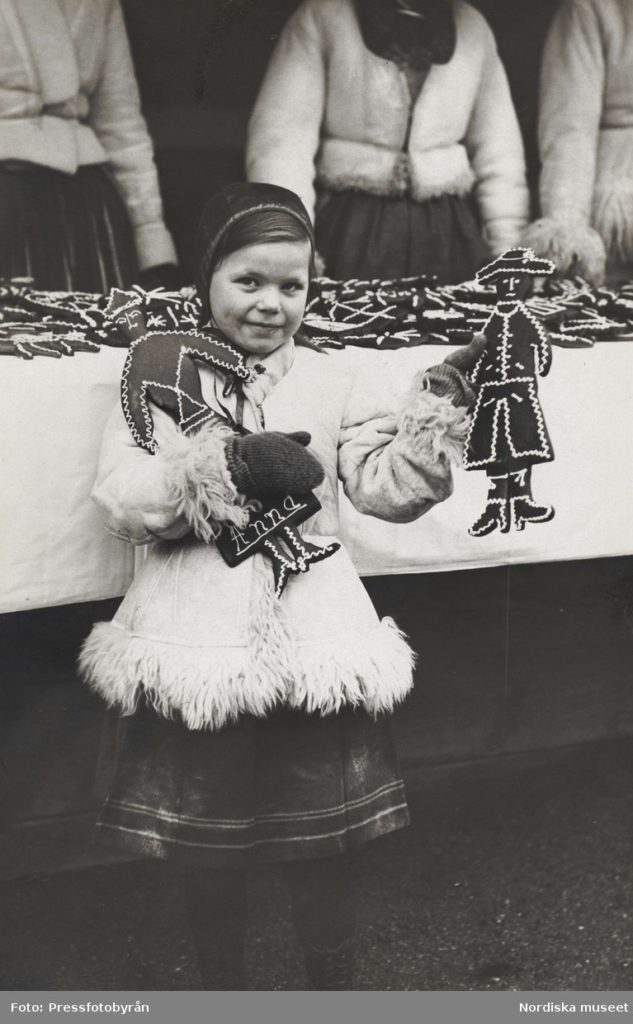
Old cook- and baking books make it clear that gingerbread cookies have been very popular in Sweden for a long time. When Husmodern shares ”almost 200” recipes in Sveriges bästa kakor (1959), 21 of these recipes are of gingerbread cookies. As another proof for their popularity, we can see De bästa pepparkakorna from the 1930s. Newspaper N.D.A. received a deluge of 1 214 recipes when they asked readers to send in their favorite gingerbread recipes. However, the editors note in the book that some older recipes “with their old-fashioned spices may not always appeal to modern tastebuds”.
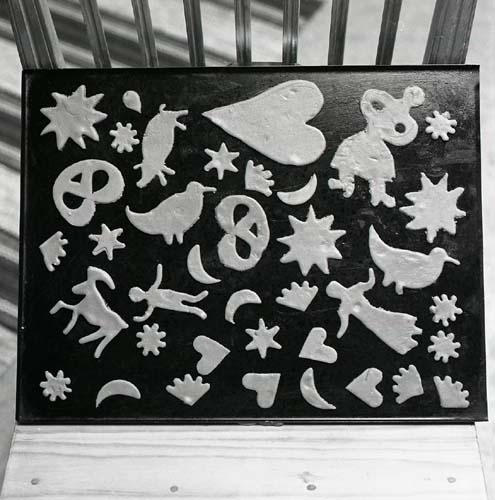
The gingerbread cookie’s contents
We can easily ascertain that the content of the gingerbread cookie has varied a lot. Spices were not just considered good for your health, but they were also exclusive, according to Swahn. Offering guests spiced bread and food was a way to signal high status. Maybe this is one of the reasons why the cookbook En gammal svensk kokbok from 1650 claims that a good household needs a grater for grating things such as gingerbread cookies. Grated gingerbread cookies in the food simply meant status — hopefully, it worked with the dish’s flavors, too…
Of course, you’ll find the most fantastical choices of spices for gingerbread cookies in the older recipes. Cajsa Warg’s version from 1755 flavors små pepparkakor with cardamom, mace, cinnamon, cloves, chopped bitter orange peel, lemon peel, grains of paradise (which has a pepper-like flavor), and rose water. Fennel, anise, and lavender flowers also make an appearance in a few older recipes.
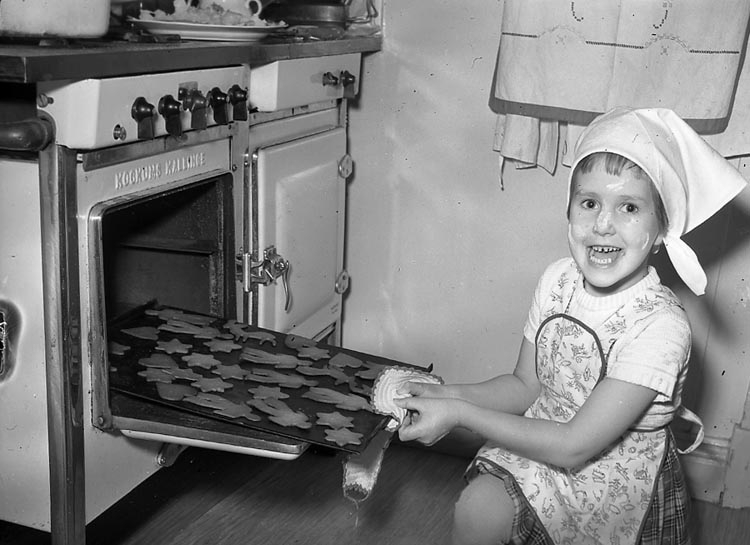
The combination of ginger and cedro oil (and nothing else in terms of spices) appear several times in the N.D.A. recipe collection. But the meaning of gingerbread seems to be pretty flexible. A recipe for especially fine gingerbread is only flavored with cedro oil. Another, of gingerbread cookies with egg doesn’t mentioned any spices at all. Maybe it is implied that the baker should whatever spices he or she prefers.
In harder times, gingerbread cookies could apparently be made on flour from acorns or bark, as shown by gingerbread cookies from the collections of Nordiska museet.
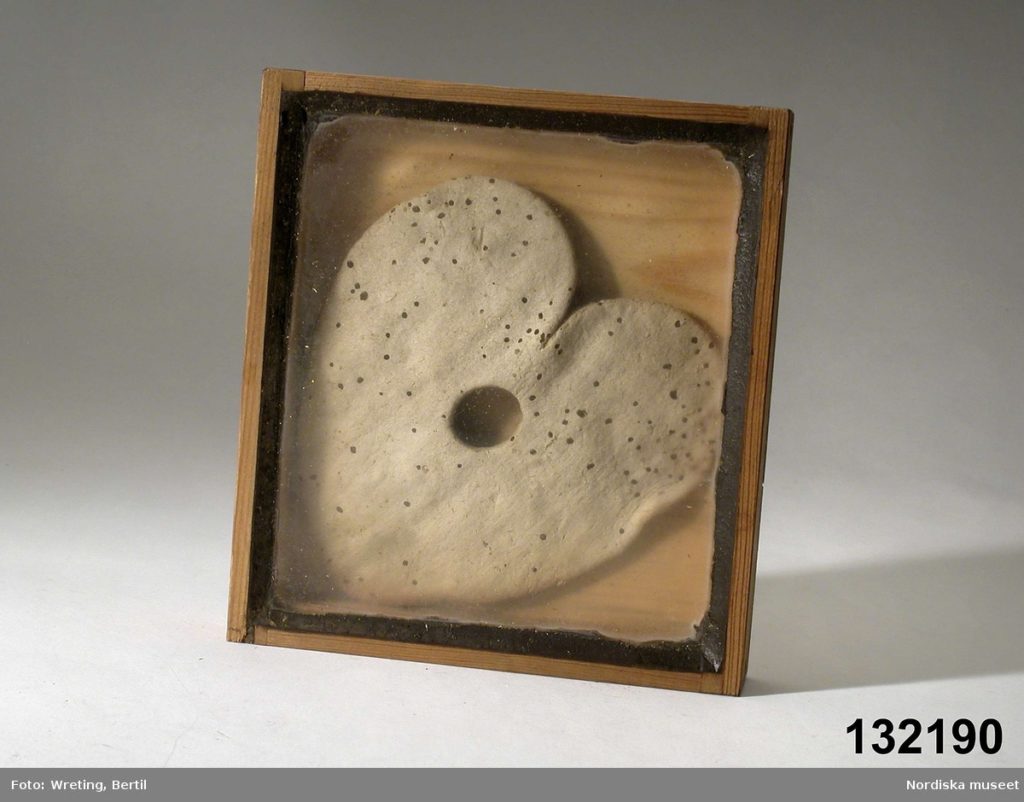
One of the great differences between older recipes such as the N.D.A. collection and present-day recipes is that many of the older recipes contain eggs or at least yolks. That is uncommon in today’s recipes.
So, what can we learn from the old gingerbread recipes?
Maybe you don’t want to flavor your gingerbread cookies with anise and fennel, but there are some things you can learn from the N.D.A. collection of recipes.
Let the dough rest
Whether you’re reading an older or a modern recipe, it is normal to let the day rest overnight to let the flour swell. In the N.D.A. collection, most doughs are left for 1-2 days, but in one case it shall be left for three weeks, even if it can be “hidden for half a year”. Maybe some type of sourdough gingerbread cookie?
Go easy on the flour
One of the great mistakes in gingerbread baking is to add too much flour. When you’ve made the dough, it will still be a bit sticky and loose, but after a day or two in the fridge, it will be of good consistency. You can always add more flour when you bake the cookies.
Add spices as you prefer
In the N. D. A. collection, some recipes think “more is more” — chopped bitter orange peels, crushed pepper, cloves, ginger, cardamom, and cinnamon. Others took the Swedish name pepparkakor, “pepper cakes”, a bit more seriously and added — apart from cinnamon, cloves and bitter orange peel — white pepper, allspice, and coriander. If you thought this sounded a bit too spicy, you can always choose the recipe with cinnamon, cloves, bitter orange, rose water, succade, and lemon peel — and a small glass of rum.
Among more modern cookbooks, cinnamon, cloves, and ginger are the most common, and sometimes cardamom. Leif Mannerström uses all four.
Add alcohol (if you wish)
The readers of N. D. A. seem to be fond of mixing the bicarbonate with schnapps or cognac, and my great grandmother used cognac, too. I don’t mind. Of course, you can skip the alcohol and use a little bit of water instead.
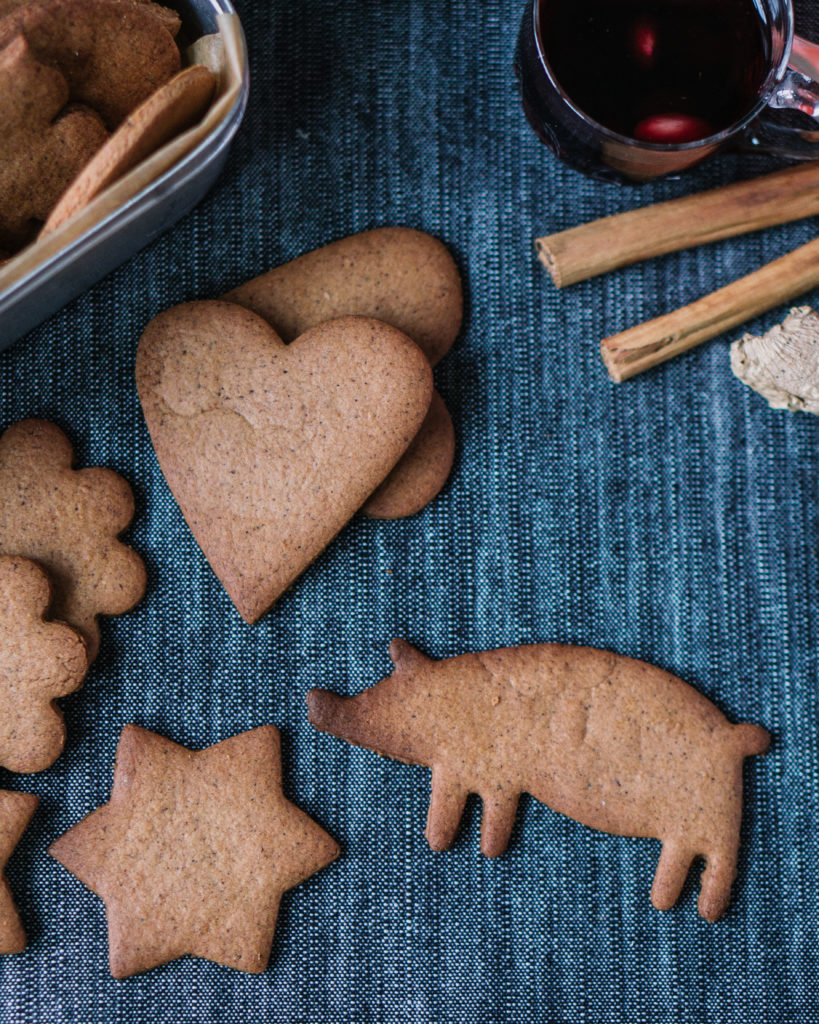
How to make spicy Swedish gingerbread cookies
This recipe is based on an old recipe from my great grandmother, with a few tweaks. Makes 100-120 cookies, depending on the size of your cookie cutters.
2 1/2 dl (1 cup) brown sugar
3/4 dl (1/3 cups) golden syrup
3/4 dl (1/3 cups) water
150 gr (2/3 cups) butter
1 1/2 tbsp cinnamon
1 1/2 tbsp ginger
2 tsp cloves
1 1/2 tsp bicarbonate of soda
1-2 tbsp cognac, or a little bit of water
a few drops of cedro oil (can be excluded)
about 6 dl (2 2/5 cups) flour, plus some extra for baking
- Add the brown sugar, golden syrup, and water to a pot and let it come to a boil. Cut the butter into slices in a large bowl and pour the warm sugar mixture over it.
- Add cinnamon, ginger, and cloves to the bowl. Let it cool until it is of room-temperature.
- Mix the bicarbonate of soda with cognac or a little bit of water. Add it to the bowl together with the cedro oil, if you’re using it, and with the flour.
- Mix until you get an even, somewhat loose dough. Cover it in plastic wrap and place it in the fridge to rest for at least a day or longer.
- When you are ready to bake, turn on the oven at 175°C (345°F). Take the dough out of the fridge and let it sit for at least 15 minutes, so it becomes easier to work with.
- Soften the dough on a floured kitchen counter and use a rolling pin to roll it out thin. Use cookie cutters to make gingerbread cookies, and place the cookies on a baking tray lined with baking paper. Try to gather gingerbread cookies of similar sizes on the same tray, so it becomes easier to bake them evenly.
- Bake the cookies for 6-8 minutes depending on the size, until they get a little bit of color. Let them cool on the tray, as they are still soft when they are warm.
Suggestions
Feel free to try out your own spice blend! If you’re not fond of well-spiced gingerbread cookies, consider using slightly less spice than in the recipe above.
Cedro oil (cedroolja) can be found for example at Essencefabriken in Stockholm. You can omit it completely, or add some finely ground bitter orange peel instead.

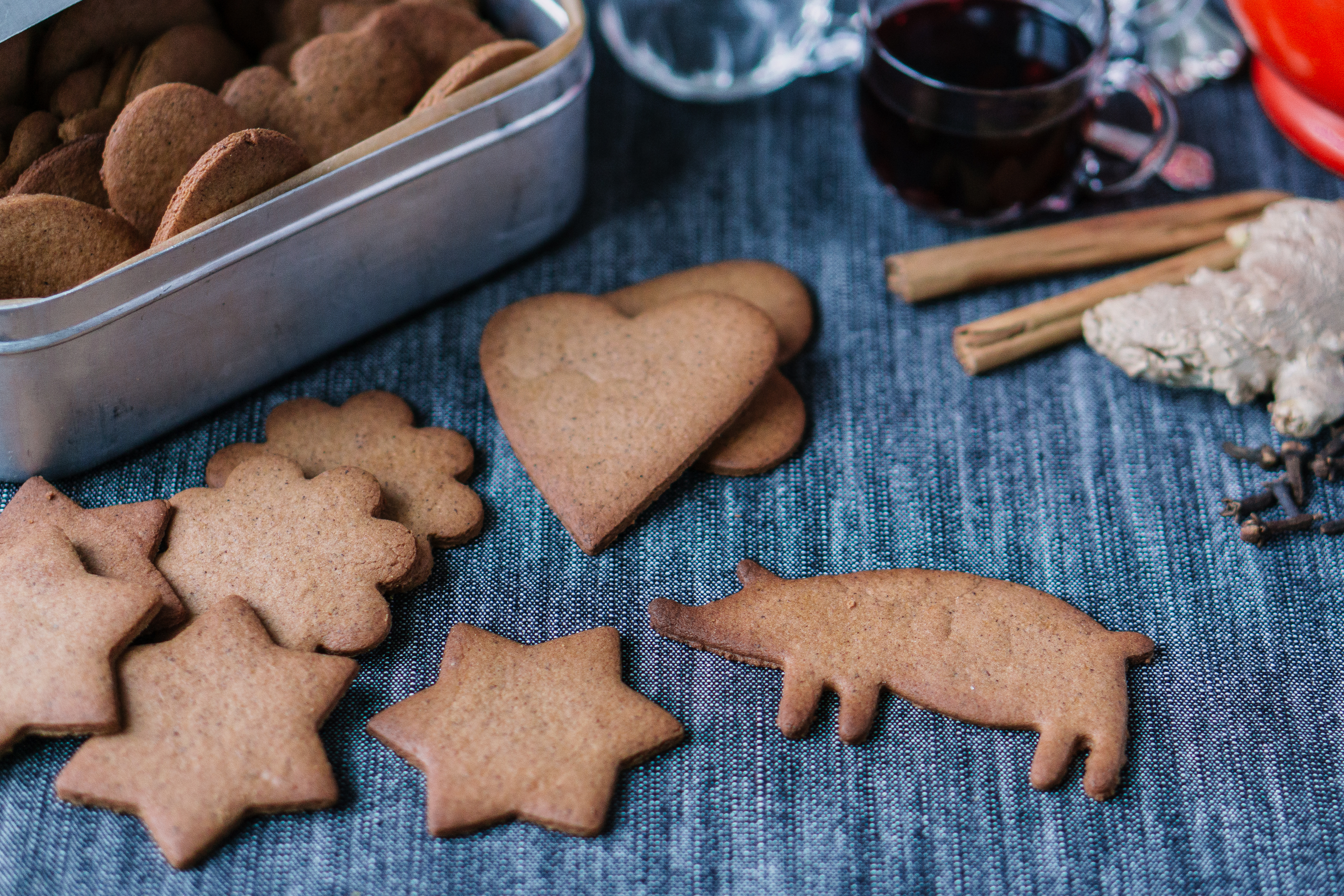

You write “The combination of ginger and cedar oil …”.
You have a slightly dangerous misunderstanding. You do not mean “cedar” oil but “cedro” oil, Cedro citrus is a variant of citrus fruit with less fruit and thicker skin with more esoteric oil. Used to be very common ingredients with swedish ginger cookies but is now adays quite difficlt to find (which is a shame …)
“Cedar” oil is a pressed oil from the bark of a tree and is most likely slightly poisoneous to eat
Johan, thank you so much for your comment — you’re right, and the recipe is now corrected. I’ve seen several old Swedish recipes mention “cederolja” but it is the citrus version that should be used.